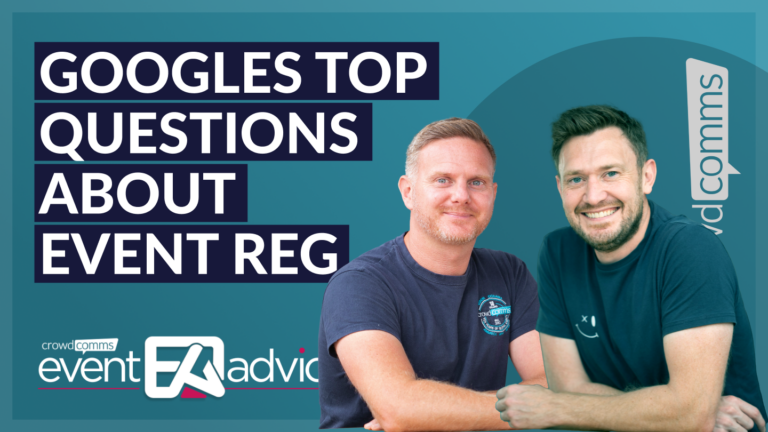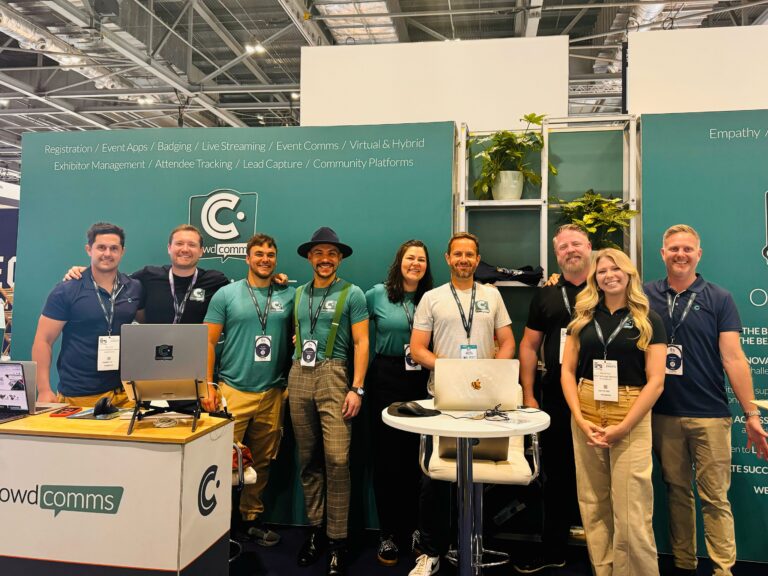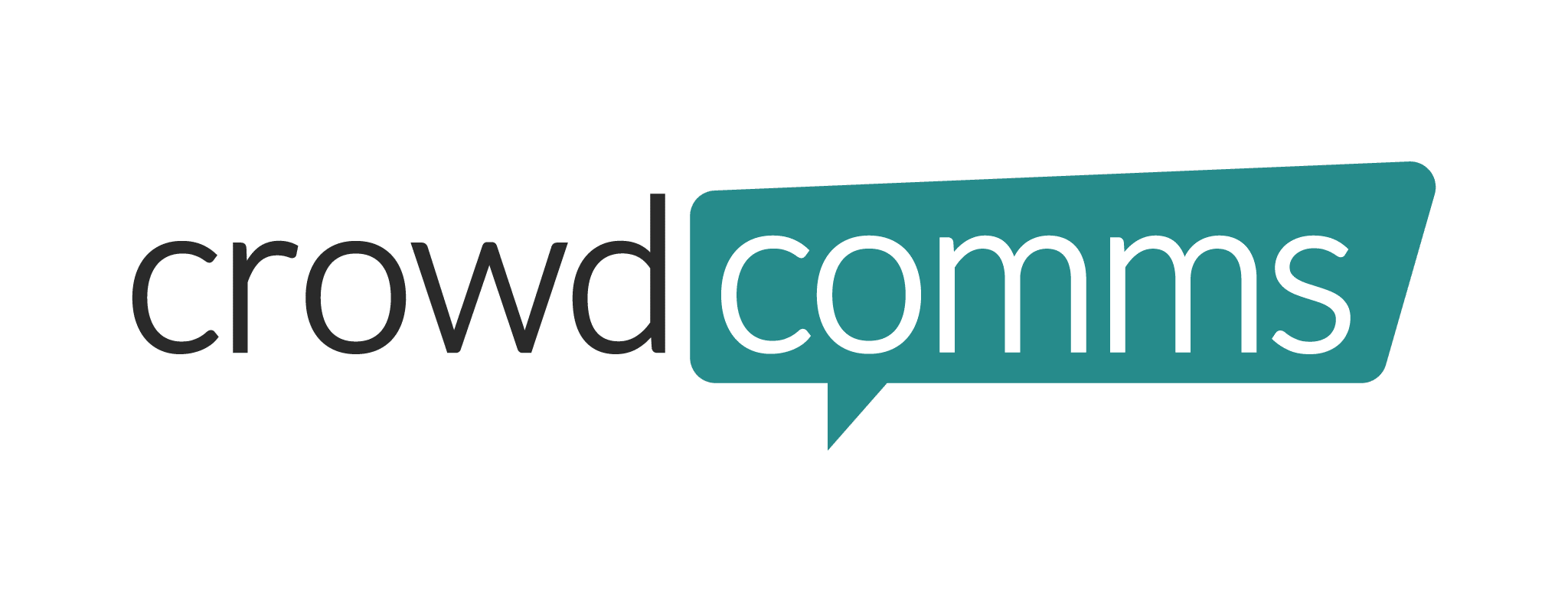Hybrid events have been a part of our lives for a very long time. Whether it’s watching the FA Cup final at the pub or enjoying The Oscars livestream from the sofa – most of us have either been an in-person or virtual attendee at many hybrid events.
While the concept isn’t new, it’s only in recent years that we’ve seen hybrid events adopted by the wider events industry. Simply put, smaller events outside of major sporting or entertainment events just didn’t have affordable access to the kind of technology needed to produce high-quality livestreaming, interactive features, and real-time networking.
Virtual Roots
That all changed during the pandemic. To ensure events could keep running during lockdown, virtual event technology received a huge injection of cash and resources.
What emerged was engaging virtual event technology that offered high quality live streaming plus interactive features, such as polling and Q&A, plus innovative networking, such as CrowdComms’ Smart Sessions.
Virtual + In-Person = Hybrid
Once the world started to get back to normal, many event professionals were super keen to return to their in-person event schedule.
However, with global travel and local restrictions still unpredictable, they needed a solution that could safeguard the in-person event and make it accessible to attendees who suddenly found themselves unable to travel.
A mix of in-person and virtual streaming/engagement was the key.
The Hybrid Event
This combination quickly became known as the hybrid event.
The in-person event would run as expected: agenda, keynote address, speaker sessions, polling and Q&A.
The virtual element would livestream all or portions of the event to a remote audience.
As hybrid event technology evolved, new features were introduced that enabled the remote audience to interact just as they would at the live version. They could participate in polls, ask session speakers questions in real-time, and network with their online and in-person attendees.
Session speakers, too, could either appear in person at the live event or broadcast to in-person attendees and remote attendees from an entirely different location!
The hybrid event introduced a new flexibility for event planners enabling them to extend their event reach beyond the in-person event.
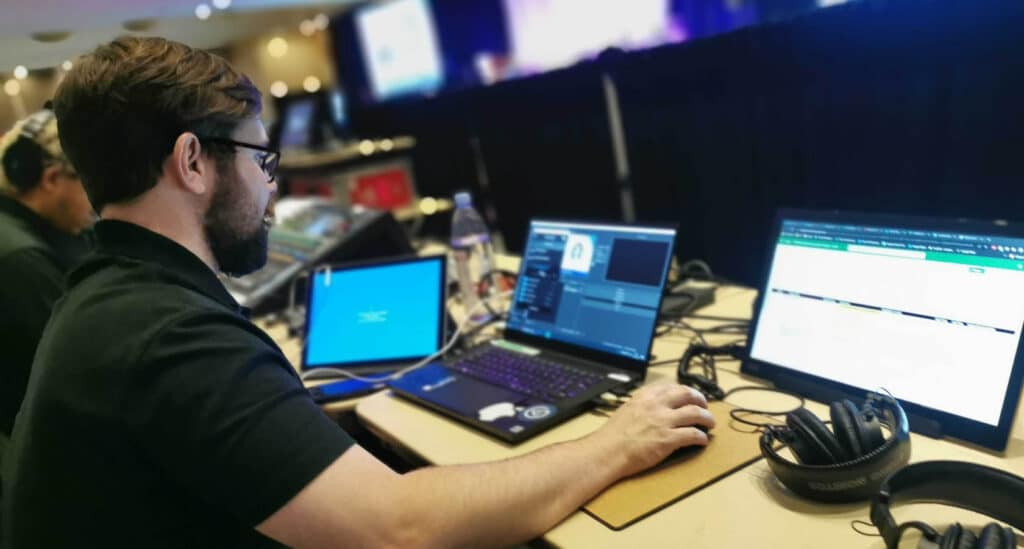
What’s Next for Hybrid?
While it’s fantastic to see attendees, sponsors, and stakeholders back onsite at live events, the benefits of including a remote audience means that hybrid will remain a key option for event planners.
Hybrid events:
- Allow planners to reach larger attendee numbers, and potentially increase ticket sales.
- Attract marquee sessions and keynote speakers whose location or time demands ordinarily may make them hard to book.
- Reduce the event’s ecological footprint by reducing the need for global travel.
- Boost inclusivity by making events accessible to those who may have physical, logistical, or financial barriers to attendance.
- Give sponsors greater ROI by reaching a wider audience across multiple event spaces, e.g., physical onsite banners, badge sponsorship, online video sponsorship, online pop-ups etc.
Plus, post-event recordings! Recording the virtual stream means planners can give post-event access to content. Not only is this great for attendees who want to revisit particular elements (e.g., specific sessions), it also means organisers can make the content available to people who couldn’t attend the original event.
It’s a great way to offer even more value to event attendees and increase revenue from content viewed later.
Planning for a Hybrid Event
Hybrid events sound like a win-win for just about every event stakeholder, but is it that simple? Does a hybrid event require heaps of additional technology, work and resources?
Not necessarily, but it’s certainly true that it would be a mistake to simply stream the live event to remote audiences. That may not give them the engaging and interactive experience they need to stop them from pressing the off button.
Some key elements to consider when planning a hybrid event include:
- Thinking carefully about creating an amazing experience for every attendee – for example, a 1-hour speaker session may work well for in-person audiences who benefit from a multi-sensory experience in a contained space. That’s a long time for remote viewers. Think about reducing the session times to say, 30 minutes or incorporating a short break in the middle so online attendees can refresh.
- Work with experienced AV and streaming teams – the right technical teams and platforms will make running a hybrid event smooth and stress-free. Look for platform providers who are used to working with on-site AV technicians. CrowdComms always makes sure its streaming and virtual platform crews are on the same page as the venue AV people.
- Choose the right venue – check the event venue has the right set-up to support high-quality streaming. Great lighting, excellent sound systems and acoustics are must-haves to ensure remote attendees can see and hear all the action. If you’re not sure about what to look for, CrowdComms is happy to chat through options and workaround.
- Look for options where both audiences can interact – although your remote attendees and in-person attendees may have different event engagement experiences, you can help make them feel like a single audience by delivering opportunities for them to connect. CrowdComms offers a range of features that enable remote and in-person attendees to interact. From virtual networking to breakout rooms – our platform is designed to make sure you can unify your audience throughout the event.
- Is everything in place to record the event? – If you decide to record the event, make sure your platform provider has the necessary technology and experience. CrowdComm regularly helps clients record their events and make them accessible via our interactive platform.
- Consider any differing time zones – If you’re making the event available to attendees outside your local area, double-check it’s not streaming in the middle of the night for them. It’s not always possible to accommodate every time zone, so if a 2 am start time is unavoidable for some attendees, definitely record the event so those people can watch at a more convenient hour! Also, review significant public holidays and religious observances. Again, it might not be possible to avoid all clashes, but it will help find a date that works for most of your attendees.
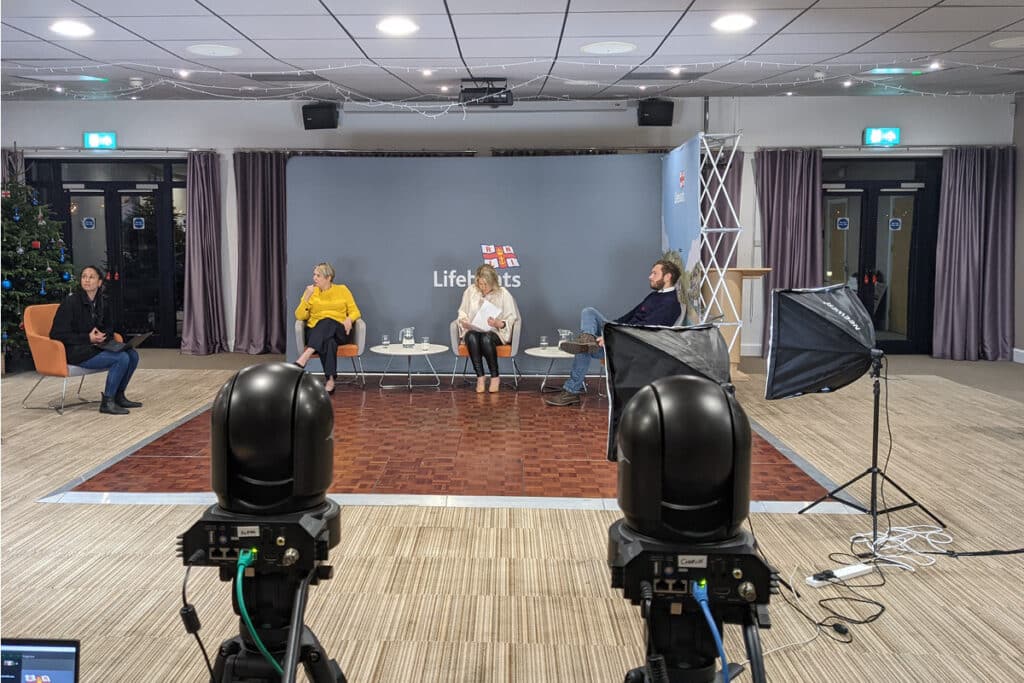
Delivering a Hybrid Event
When it comes to delivering your hybrid event, the last thing you want is to feel like you’re juggling two separate events on the day.
If you have a great streaming and AV team who can work together, the virtual component should be a breeze and require minimal input on your part.
CrowdComms will always support planners with a streaming consultant who will be your contact point for the virtual element of your hybrid event.
Because we make sure there is in-depth planning and pre-event team briefings, we’re rarely called upon to deal with any major streaming issues.
Reviewing Hybrid Event Success
Post-event evaluation is critical to ensure your events continue to deliver the features your attendees need.
While in-person events often have to rely on attendee surveys, the great thing about hybrid events is the high-quality data.
You can track: number of viewers, time spent on screen, most popular sessions, networking activity, click-through rates for sponsor promos, and much more.
When combined with your post-event survey results from your in-person attendees, plus event app data (if you have one), you have a powerful data set that can inform the blueprint for your future events.
In Summary
While not a new concept, hybrid events emerged from the pandemic to offer a whole new way of engagement for event planners.
Combining remote audiences with in-person attendees can deliver a powerful way to increase revenue, reduce ecological footprint, extend audience reach, and boost inclusivity.
